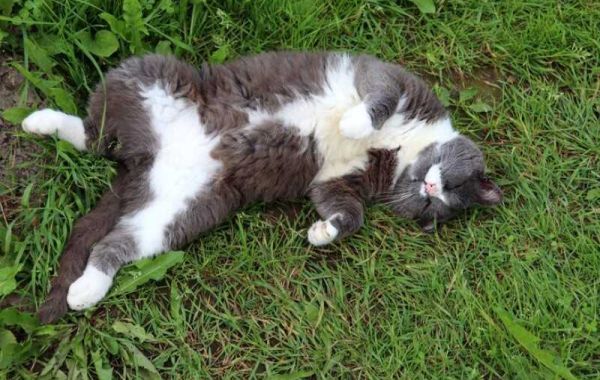Cats, known for their enigmatic behavior, often exhibit a myriad of sleeping positions, each revealing unique insights into their emotions and well-being. One such position that captures the attention of cat enthusiasts is when cats sleep on their backs. In this article, we'll delve into the reasons behind this intriguing behavior, uncovering the emotions it conveys and how it contributes to the dynamic between feline companions and their human counterparts. Additionally, we'll explore the often-asked question: How long do cats sleep every day?
Common Cat Sleeping Positions
Cats, with their flexible bodies and diverse personalities, often showcase a variety of sleeping postures. Each position offers a glimpse into their emotional well-being and comfort within their environment. Here are some common cat sleeping positions:
- Curled-Up Ball
- Stretched-Out Lounge
- Side Sleeping
- Curled-Up with Tail Over Nose
- Back Sleeping with Belly Exposed
Reasons Why Cats Sleep on Their Backs
Cats are meticulous in choosing their sleep positions, and when they opt for the vulnerable back position, several reasons may be at play. Firstly, it speaks to their comfort and relaxation, suggesting a sense of ease in their surroundings. Secondly, it signifies trust and confidence in their environment and the individuals around them. This position, however, also leaves them physically vulnerable, indicating a deep level of comfort and security.
The Communication Aspect
Cat owners often find themselves deciphering the meaning behind their feline friends' behaviors. Sleeping positions, including the back-sleeping posture, serve as a form of non-verbal communication. For instance, a cat sleeping under the covers might seek a sense of safety, while one on the bed might be strategically positioned to keep a watchful eye on the bedroom door.
The Role of Environment
The environment plays a crucial role in shaping a cat's sleeping habits. By creating a safe and comfortable space, cat owners can encourage specific sleeping positions. Understanding a cat's need for security and providing cozy resting spots can influence their choice of sleep posture, including the occasional back sleep.
How Long Do Cats Sleep Every Day?
Cats are renowned for their love of sleep, spending a significant portion of their lives in slumber. According to americancat On average, cats sleep 12 to 16 hours a day, with kittens and senior cats leaning toward the higher end of the spectrum. Factors such as age, health, and lifestyle can influence a cat's sleep duration. While it may seem excessive, this extended rest is essential for their physical and mental well-being.
Tips for Cat Owners
- Understand and respect your cat's need for sleep; ensure they have a quiet and undisturbed space for their rest.
- Provide comfortable beds or blankets in secure areas where your cat can feel safe and relaxed.
- Regularly observe your cat's sleeping patterns; changes may signal underlying health issues that need attention.
- Acknowledge and accommodate your cat's natural sleep tendencies, whether it's curled up, stretched out, or on their back.
- By considering and catering to your cat's sleep preferences, you contribute to a healthier and happier living space for your feline companion.
Conclusion
Understanding why cats sleep on their backs gives us a peek into their feelings and how they see their world. When we, as cat owners, appreciate and respond to these unique sleeping habits, it helps build a stronger connection with our feline friends. It creates a happy home where trust and relaxation thrive. By sharing this language of sleep, we make our living space a cozy and comfortable haven for both cats and humans, strengthening the special bond we share with our whiskered companions.








